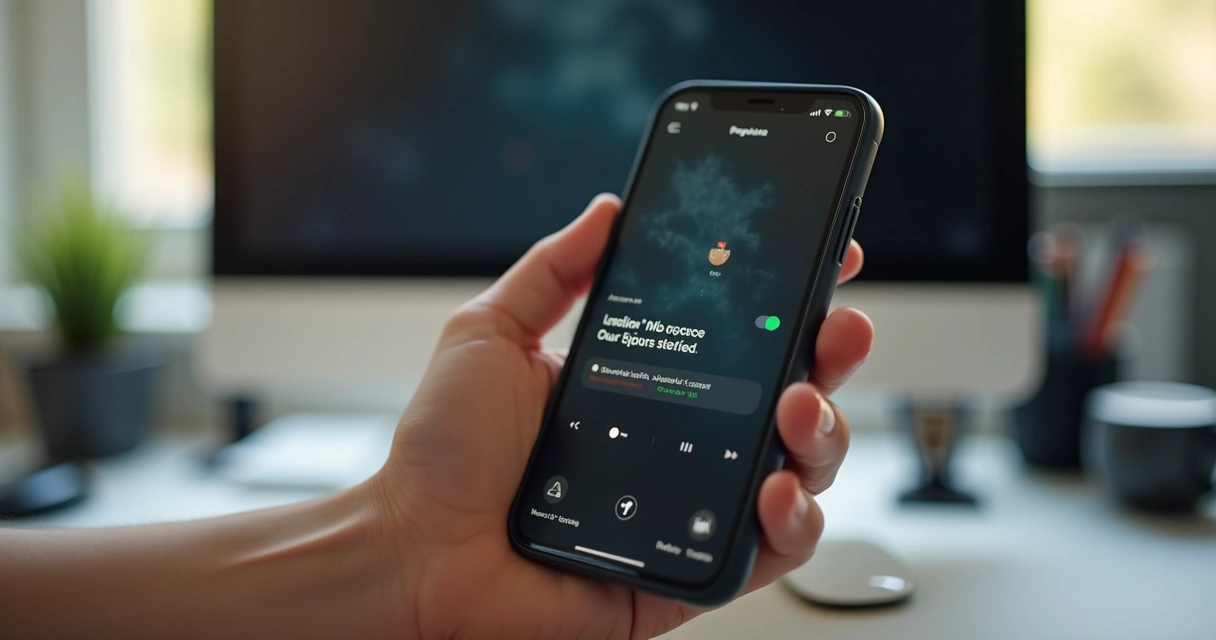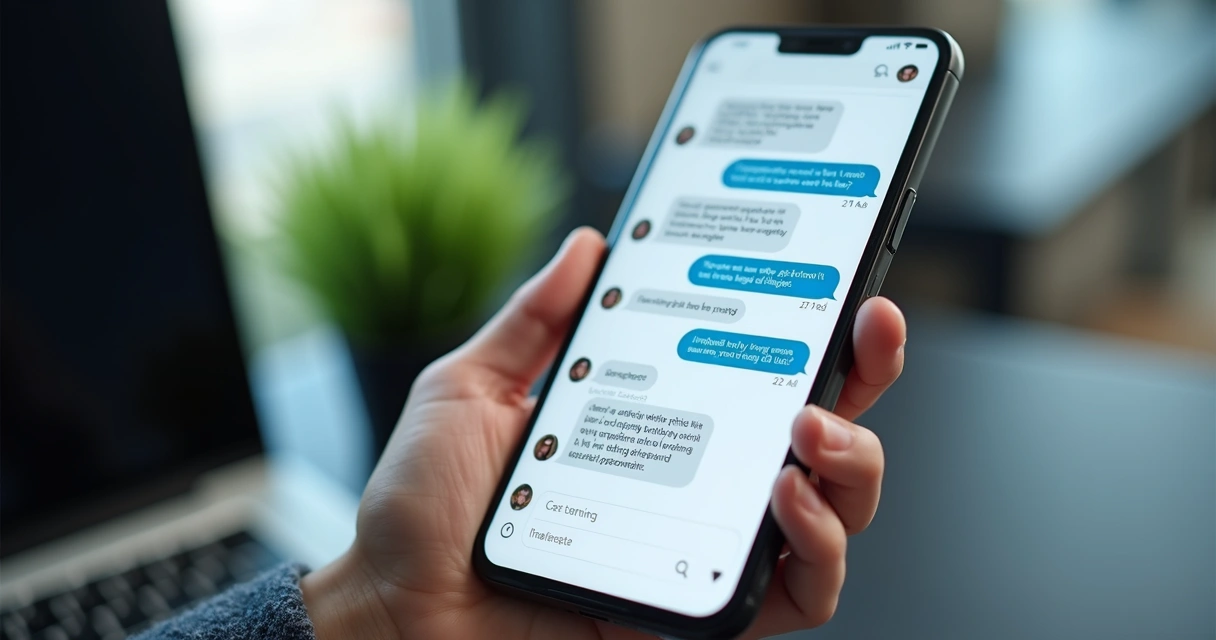When people pull out their phones today, they expect digital experiences to work like a charm. In fact, from what I see every day as a Senior Software Engineer, most websites can't afford to be anything but delightful and efficient on small screens. More than half the world browses on their phones, a fact confirmed by recent studies from the University of Sussex. So when I craft digital solutions for my clients—or when you consider your next web project—you should know that mobile-first design isn’t just a recommendation anymore. It is the foundation for relevance, reach, and growth.
Strong mobile experiences are now the default expectation, not an optional feature.
With over 16 years building what works for users and businesses alike, I’ve discovered that making a site thrive on mobile screens isn’t just a box to tick. It demands real thought and refined skill, from the earliest layout sketch down to the final pixel. If you're seeking a partner who knows how to bring modern, scalable apps to life, with advanced knowledge in PHP, JavaScript, AI, and cloud tech—well, I think you'll find that Adriano Junior is uniquely ready to help.
Why designing for mobile matters now more than ever
As the world rushes through 2026, the numbers tell a simple story: mobile devices grab the bulk of web traffic across regions and industries. My daily workload always starts with this awareness. If your website still treats mobile users as an afterthought, you're already behind. Here is why:
- Mobile-first indexing is now standard in search engines. This means your site’s mobile version is the one that Google and others look at to decide your rankings.
- User patience is thinner on mobile devices. Slow or clumsy sites are abandoned quickly—sometimes before a page loads fully.
- Buyers make high-stakes decisions on their phones. Whether comparing services, filling forms, or shopping, any friction pushes them straight to competitors.
So, what makes a mobile web experience not just passable, but genuinely helpful? In this article, I’ll share the core design ideas, hands-on practices, and my personal toolkit. I’ll keep things grounded—because glossy frameworks won’t help if the basics aren’t right.
The principles behind mobile friendly designs that work
I’d be remiss to start anywhere but with the basics. If you want people to enjoy using your website on their phones, you must first commit to these:
- Responsive layouts that adjust to all screen sizes.
- Prioritizing user experience over visual excess. Every click or swipe should feel natural.
- Speed and efficiency. No user should wait for images or scripts to load.
- Clarity in every button, menu, and message.
- Accessibility for all, not just most.
All these shape how I tackle projects as a freelancer—and they drive results. The challenge is balancing what looks nice with what gets the job done for each user, no matter their device or abilities.
What does responsive really mean?
Some people worry that ‘responsive’ is just a buzzword, but I see it as both an art and a science. At its heart:
Responsive websites respond to the environment, adapting layout, font sizes, and actions for the device.
Using flexible grids and media queries (like @media in CSS), I craft web apps that smoothly shrink, stretch, or shift their elements from 6.1-inch phones to wide desktops. This can seem simple at first, but tuning it so everything feels just right takes time and care. A result from my approach? Fewer complaints, greater conversions, and happier clients.
Making mobile-first thinking a real strategy
Mobile-first isn’t a new phrase, but its meaning has deepened. It’s not just 'shrinking down' your desktop designs. When I start a project—even for advanced applications or AI-powered dashboards—I make sure the earliest wireframes and prototypes revolve around the phone experience.
- Navigation starts with a thumb, not a mouse.
- Content is trimmed for value, not for space.
- Buttons, links, and forms are built for tap accuracy, not fine-point clicking.
The difference? You’ll spend less time troubleshooting, and your users will spend more time engaged. I have seen first-hand how businesses that treat mobile users as their focus retain more leads and close more sales.

Core steps for genuinely useful mobile designs
If I could tell my clients what really matters for mobile, it would be this list. These aren’t hollow promises—they are practices I use, refined by daily work and research.
1. Start with clear, simple layout structures
Clutter kills on mobile. I always advise against crowding pages with non-vital images, decorative sidebars, or tiny-font details. Instead, I lean on:
- Single-column layouts so eyes flow top to bottom naturally.
- Generous white space to separate content and reduce overwhelm.
- Readable headings and ample font sizes.
I avoid side-to-side scrolling and make sure content never requires zooming or manual adjustment. This respect for space improves scanning and lowers bounce rates.
2. Optimize your navigation—the thumb rule
Menus that work great with a mouse often fail on a phone. Even so-called leading solutions overlook this. Here’s how I build navigation that fits how people really use their phones:
Menus must be simple, predictable, and at your thumb’s reach.
Drawing from best practices from reputable institutions, I:
- Favor horizontal, fixed-top or “hamburger” navigation. Nothing should hide your logo or key action.
- Use short, descriptive labels for each menu item—no guessing.
- Avoid drop-downs more than two levels deep.
- Keep touch targets wide and comfortably spaced, preventing accidental taps.
- Place important links (like Home, Contact, Services) at clear, consistent spots.
When clients switch to this approach, their user journeys become smoother, and support queries drop. I notice this pattern over and over—the less guessing needed, the happier everyone is.
3. Ensure natural touch interactions and gestures
I spend a significant amount of time testing all interactive areas so they are finger-friendly. Here’s what works:
- Buttons and inputs spaced for thumbs (usually 44px by 44px minimum, based on research).
- No tiny checkboxes or minuscule action icons.
- Forms with auto-focus, numeric keypads for phone numbers, and auto-complete for emails.
- Swipes for relevant carousels, but arrows for everything else to avoid confusion.
When tools or frameworks (like Bootstrap or Tailwind) provide shortcuts for this, I use them, but only after checking real usability on various devices. Shortcuts don’t replace good testing, and that is key in my workflow.
Improving speed—the silent winner on mobile
Even with a beautiful design, a sluggish site pushes users away. Fast load times reduce abandonment and boost conversions. In my work, I measure performance as much as visual polish. Just as I regularly stress in modern DevOps projects (see my take on key practices for software delivery acceleration), speed defines user satisfaction.
Pillars of faster websites
- Optimize images and media files. This is the most common cause of lag. I use modern formats (like WebP or AVIF), set right-sized images, and always use lazy-loading.
- Leverage browser caching and minify scripts. Automated build tools can handle this, but, honestly, manual checks often reveal further room for improvement.
- Avoid unnecessary plugins or scripts. Each extra tool or library adds weight, sometimes silently hurting your mobile experience.
- Deploy Content Delivery Networks (CDNs) for assets, so every region gets fast response times.
- Use server-side rendering or static site generation where possible. Modern frameworks like Next.js, Nuxt, or Astro all do this well.
When a site loads under three seconds, users stay. Over five seconds, most are gone.
Clients often ask me to audit their platforms, and I always begin with image and script reviews. Even sites made by reputable agencies sometimes ignore this—another reason a seasoned freelancer brings real value.

Designing calls to action for small screens
Calls to action (CTAs) are where users decide: act or leave. On mobile, this decision happens in seconds. In my builds, I make sure CTAs are visible, attractive, and never in the way. Some principles:
- High contrast colors for buttons, but matched to brand style.
- Short labels—maximum of 3 or 4 words works best.
- Plenty of padding, so no one taps the wrong thing.
- Placement within thumb reach—usually the lower quarter of the screen or at natural breakpoints.
Testing these adjustments, I often see click-through rates rise by 20% or more. That's not hard data from a big institution, just my own quiet evidence from project after project.
Mobile micro-interactions to validate CTAs
I encourage small cues—a loader spinner, a color shift—so users always know an action is progressing. Feedback prevents confusion and adds a sense of progress. Too many platforms overcomplicate with sounds or shakes; simplicity, I've found, is safer.
Accessibility: when everyone matters
Besides legal requirements, which are well detailed by the University of Oxford, the case for accessible design is simple: there’s no excuse for excluding users.
- Contrast ratios matter—for text, buttons, icons.
- Proper alt text on images. This not only aids those using screen readers but helps SEO.
- Keyboard navigation for all forms and links, for users with mobility challenges.
- Labels and cues for every field, never only placeholder text.
An accessible site welcomes everyone, not just those you expect.
I often remind clients that winning at accessibility improves ranking, reputation, and revenue—a trio worth chasing. That’s why I never treat it as an extra, but as part of the core agreement when I take on new web projects.
Keeping it simple: Content, images, and reading flow
Everything you say (or show) on your site must fit mobile attention spans. People often want answers, not novels. I follow these habits:
- Short paragraphs—two or three sentences, tops.
- Headings to break up the page and guide the eye.
- Bullets, lists, and simple language for instructions.
- Images only where they add value, with relevant alt texts, as detailed by research on content good practice in user experience.
I find that when clients cut the fluff and organize with care, mobile engagement rates soar.

Testing and validating across devices
I know firsthand that what works on an iPhone may break on an Android or a Samsung Fold. That's why I always:
- Use device emulators for fast checks, but test on real, physical devices for accuracy.
- Try different browsers—Chrome, Safari, Firefox, Edge.
- Simulate slow connections and full offline states.
- Check for accessibility with screen readers and voice controls.
- Watch for layout issues when switching from portrait to landscape.
Each test reveals minor glitches—sliding images, cut-off buttons, odd overlaps—that only show up for certain users. Fixing these before launch saves time, cost, and frustration. That’s part of the value I bring as a hands-on engineer, not just a designer.
Top tools and frameworks I trust in my projects
Over the years, I’ve narrowed down my toolkit to those enablers that save time without sacrificing result. When it comes to technology stacks, I pick what aligns with your goals—not just what’s trendy.
- Tailwind CSS and Bootstrap for flexible, mobile-ready layouts out of the box.
- React Native when crossing over into hybrid app territory.
- Vue.js and Nuxt for fast, server-rendered web apps that run great on mobile.
- PWA tools (like Workbox), so your site can act like a native app offline.
- Cloud platforms (AWS, Vercel, Netlify), for reliable hosting, fast builds, easy scaling.
I’ve written more about mobile-ready frameworks that scale for businesses—if you want deeper detail, that’s a good next step.
Common challenges—and how I solve them
No matter how many mobile-first projects I launch, the issues often repeat. Here's my practical checklist:
- Overcomplicated menus? Simplify and prioritize top-level items only.
- Slow start time? Compress images, remove unneeded libraries, check server response times.
- Forms abandoned before submission? Smaller, vertical fields, auto-complete, and fewer required fields help.
- Animations causing jank? Minimize or delay them for smooth scrolling, or use hardware-accelerated CSS.
- Platform-specific bugs? Rely on tried-and-true frameworks, but always do real device testing as a backstop.
With more than a decade of fixing these headaches, I can say my process is both battle-tested and efficient for businesses aiming to grow without digital hurdles.
Integrating APIs and AI for richer mobile sites
The world of mobile isn’t just about static pages anymore. Users expect sites to talk to apps, use smart assistants, or recommend content on the fly. My own consulting services often tie in advanced features, especially for clients who want an edge.
- API connections for real-time data (think weather, stock quotes, or booking tools).
- AI-powered suggestions—like chatbot helpers or smart search bars.
- Integrating with cloud platforms for faster updates and content delivery.
If you want to see how I approach connecting platforms and intelligent features, my guide on building APIs and integrated systems is a reliable starting point.

Why clients trust my process
I think the difference I bring to mobile-friendly web projects comes from hands-on curiosity as much as hard-won expertise. I’ve built everything from sleek landing pages to intricate AI-powered dashboards, always placing users at the center. Clients tell me they notice:
- Clarity at every stage—wireframe, prototype, launch, and ongoing support.
- Deep attention to both tech and business goals, whether targeting leads, sales, or retention.
- Honest feedback and full transparency, with practical advice on every tricky choice.
When businesses consider options, some larger agencies promise fast or cheap delivery, but in my experience, they often cut corners, especially on post-launch testing and support. As a freelancer, my personal investment in every project is deeper. This is backed by my detailed portfolio of successful past projects and a range of services in full-stack, cloud, and AI integration.
But what about competitors?
It’s true that globally-recognized agencies also propose mobile solutions. Some even have good track records, but from what I observe, many lack the one-on-one adaptability that working with a seasoned freelancer like myself brings. Businesses who commit to me gain access to real advice, direct communication, and quicker pivots—all without the downtime of large-team bureaucracy.

Where to go from here?
Maybe this is your first time thinking about a total redesign for modern devices. Or perhaps you’re ready to transform your digital presence but want a trusted hand from the very first draft to the final test. If mobile ready, AI-enhanced, scalable websites are your next step, working with Adriano Junior ensures the result will stand out in 2026 and beyond. If you're curious how my process can benefit your brand, just browse my web development, AI and consulting offerings.
In a mobile world, doing digital right means finding the right people, not just the right tools.
Ready to bring your mobile presence up to speed? Reach out or get inspired by more of my experience—let’s make your next web project a success.
Frequently asked questions about mobile friendly website design
What is a mobile friendly website design?
Mobile friendly website design means your site displays and functions well on all devices, especially smartphones and tablets. This style of design uses layouts and technology to allow any visitor—regardless of their device—to view, interact with, and use your website naturally, without needing to zoom or scroll sideways. In my workflow, I build every project to achieve this as a basic requirement.
Why is mobile optimization important in 2026?
Mobile optimization matters so much in 2026 because mobile browsing is now the norm, not the exception. Studies such as those from the University of Sussex show that more than half of visitors use mobile devices. If your site isn’t friendly to mobile users, your ranking in search engines drops and potential customers will quickly leave for competitor sites.
How can I make my site mobile friendly?
There are several key steps I follow to make sites user-friendly on phones. First, I design with flexible grids and layouts that adjust smoothly to any screen width. Next, I trim menus and content to what’s really needed—no more, no less. I optimize all media and ensure fast load times. From there, it’s about testing your site on multiple devices (not just emulators), and always following current accessibility standards. This is the process I’ve refined through hands-on experience and what I offer clients with every new project.
What are the top mobile design practices?
The top practices I stick to are: use responsive, single-column layouts; simplify your navigation to one or two levels; ensure every interactive element is easy to tap; reduce load times by optimizing files and scripts; keep content short and focused; and always include accessibility features like alt text and proper color contrast. These basics, when applied with care, lead to a much better user experience and improved business results.
How much does mobile website design cost?
Costs for mobile website design can vary. Simple brochure sites tend to be quite affordable, while adding features like e-commerce, AI, or advanced integrations raises the price. My approach is always transparent: I discuss scope, goals, and budget upfront with clients to avoid surprises. Because I work as a freelancer, my clients usually enjoy lower costs than they would with large agencies and gain direct attention throughout the project. Custom solutions start from an accessible rate, but always reflect the true needs and quality standards of the modern mobile market.
